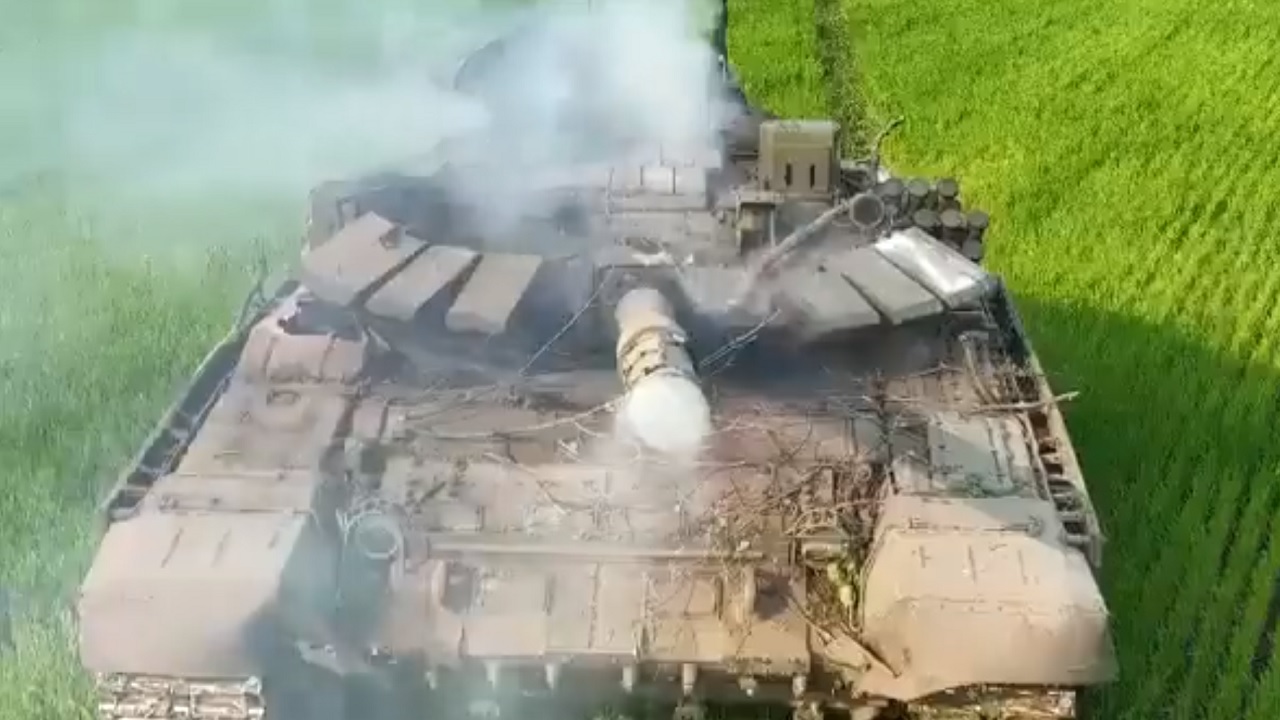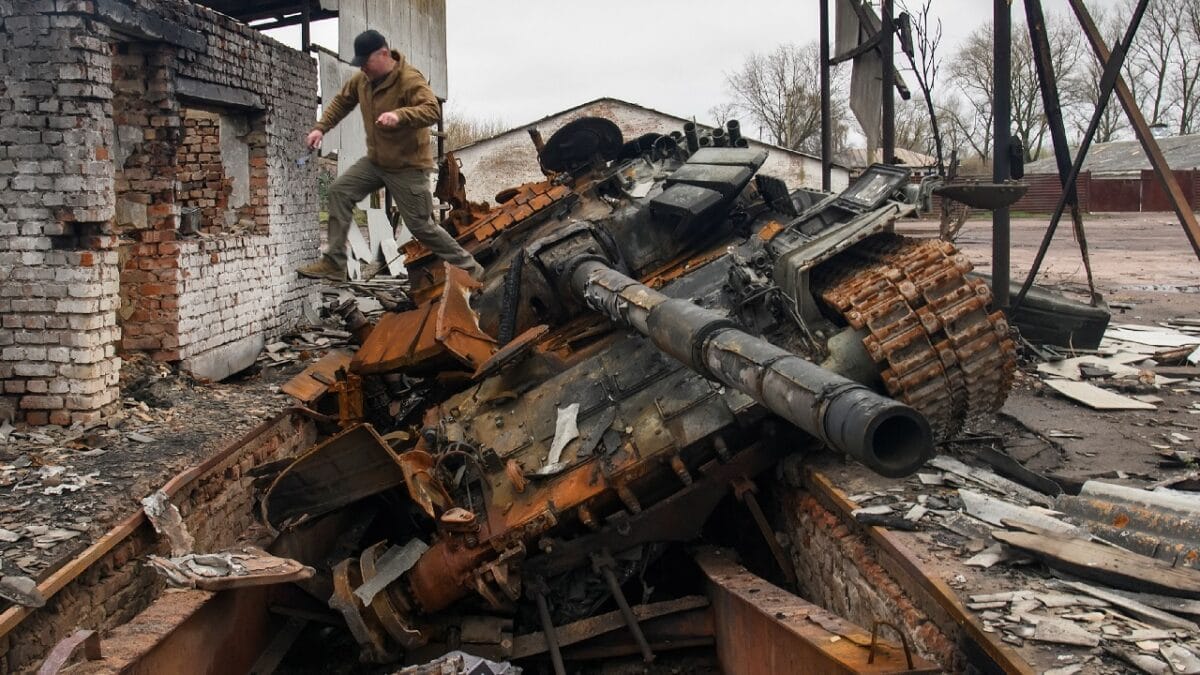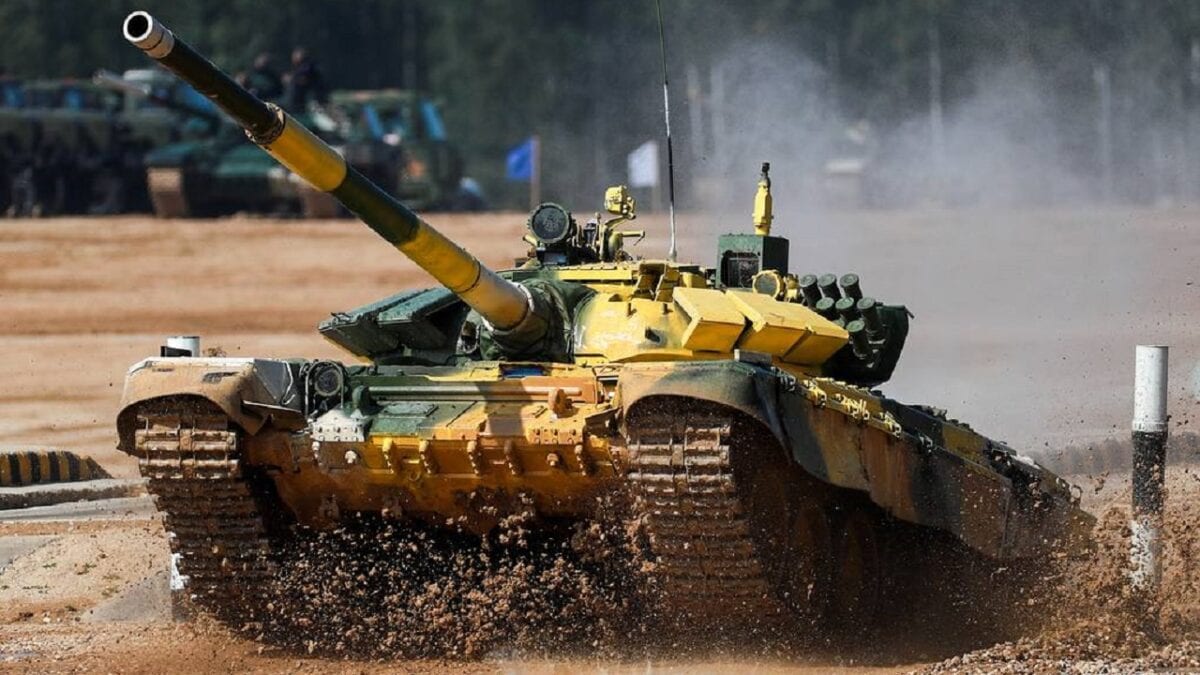David Hambling

Russia has lost over 2,200 main battle tanks in the conflict with Ukraine but still maintains a significant advantage in armor. While Ukraine struggles to find donors to supply small batches of tanks, Russian factories are sending a steady stream of new vehicles to the front – or at least so they claim. In fact, Russia is rebuilding tanks rather than building them, and their capacity to do so may be reaching its limit.
Tank Makers and Re-Makers
Russia has just one tank factory, the once-mighty UralVagonZavod (UVZ) or “Ural Freight Wagon Plant” in Nizhny Tagil, a thousand miles East of Moscow. During WWII it was Stalin Ural Tank Factory No. 183 and turned out an astonishing 1,000 T-34 tanks every month, but years of corruption and bad management have taken a toll on the facility. UVZ’s showpiece T-14 Armata supertank is not in production eight years after it was first unveiled, due to endless technical problems. UVZ is supposed to make twenty T-90M tanks a month, but Sergio Miller, an independent analyst formerly with British Army intelligence, estimates that UVZ has produced perhaps forty T-90Ms since the start of the war.
The vast majority of Russia’s ‘new’ tanks are really rebuilds of old vehicles from storage. This exactly mirrors the situation in the U.S., where the Army’s new M1A2 Abrams were in fact rebuilt and upgraded M1s from the thousands held in storage at Sierra Army Depot in Doyle, California.
Russia has vast stockpiles of old tanks, from T-90s barely twenty years old to rusting T-62s from the 1960s. These offer raw materials for refurbishment by the BroneTankovyRemontnyZavod (Armored Vehicle Repair Plants) or BTRZs. There are currently three such plants for tanks: OmskTransMash, the Omsk Transport Machine Factory, the 61st BTRZ near St Petersburg, and 103rd BTRZ in Siberia. Previously the BTRZs were mainly in the export business, producing tanks for Venezuela, Vietnam, and Nicaragua as well as the Russian army. Now they have one priority: replacing battle losses in Ukraine.
Two more plants – the 71st BTRZ near Rostov and the 72nd in the Moscow region – were announced last year and may already be operational. Both of these will repair damaged vehicles and modernize old stock. There are also at least ten other BTRZs specializing in other types of vehicles.
New Tanks From Old Tanks
The Russian refurbishment process is extensive. Each vehicle is dismantled into roughly a thousand separate parts which are labeled to indicate the vehicle they came from, and sent to specialist workshops for cleaning and repair or replacement. The tank body is scoured with iron shot to remove old paint and rust. Engines are tested and overhauled, and everything else is tested and adjusted.
Refurbishment can mean more than just getting a vehicle working again. Turning a basic T-72 into the latest T-72B3 involves replacing the original engine with a new model that is 50 percent more powerful, replacing the gun with an improved version capable of firing guided missiles, and upgrading the armor with a layer of explosive reactive armor blocks. New sights, thermal imagers, and a ballistic computer and digital encrypted radio are also included.
This process turns scrapyard occupants into modern fighting machines and is far cheaper and faster than building new vehicles from scratch.
Each plant can produce roughly twenty modernized tanks per month under ideal conditions. When Defence Minister Shoigu visited OmskTransMash in June, he stated they he was instructing them to produce 153 T-80 BVMs by the end of the year before the end of the year, or 25 a month. This target likely represents the upper end of OTM’s capacity, which they are unlikely to reach. But unlike the ailing UVZ, OmskTransMash does appear to be operating at something like its intended level, with a recent video apparently showing railcars carrying rebuilt T-80BVMs to Ukraine.
Rebuilding magnifies Russia’s tank replacement capacity from under 10 vehicles a month from UVZ alone to more like 120. This figure tallies with claims by Putin’s right-hand man Dmitry Medvedev who claims, perhaps optimistically, that Russia will build 1,500 tanks in 2023.
Digging Deep In The Tank Mines
Continuing tank production relies entirely on the availability of raw materials. The inavailability of imported electronics has hit Russia hard, and some of the vehicles arriving on the front lines reportedly lack thermal imagers and other modern equipment. This may not have much significance, as tanks are used more as mobile fire support and as artillery and tank-versus-tank encounters have so far been rare. More importantly, Russia’s supply of old tanks for rebuilding is showing signs of running down.
Before the war, storage depots around Russia housed an estimated 10,000 old tanks. Of these, a small proportion of perhaps 10 percent, were still operable and these were quickly put into service. Since then the BTRZs have been busily working on the remainder and either turning them into new vehicles or scrapping them.
The largest single armored vehicle storage site is Vagzhanovo in Buryatia close to the border with Mongolia, and holds a mixture of tanks, personnel carriers, and other armor. Vagzhanovo is one of the lowest-grade mothballing facilities. The highest-rated storage sites are climate-controlled hangars, below that are unheated hangars, followed by storage under covers or awnings. At Vagzhanovo the vehicles are stored out in the open, which means they can be surveyed by commercial satellites.
According to a report in the Moscow Times, at the start of the war, the Vagzhanovo facility held almost 3,840 vehicles. By November 2022, eight months after the initial invasion, the number was down to 2600, and by May 2023 this had reduced to 2270.
It is striking that a large number of vehicles were withdrawn relatively rapidly, presumably those in the best shape, which could most easily be returned to service. The rate of extraction has dropped from around 150 a month to around 50, despite the fact that there should be more BTRZs in operation. One theory would be that the BTRZs already have as many vehicles as they can handle. More likely, the supply of suitable candidates for refurbishment is running out as vehicles are cannibalized to get a few of them working.
According to analyst Jakub Janovsky of the open source-intelligence group Oryx, perhaps 1,000 of the 2,270 remaining vehicles are wrecks (for example, lacking turrets), which cannot be repaired and which will be left to rust. This suggests that Russia may already have run through something like 60 percent of the vehicles available.

A man jumps from a Russian T-72 tank destroyed during Russia’s invasion, in the village of Yahidne, Ukraine April 20, 2022. REUTERS/Vladyslav Musiienko
Production And Destruction
During WWII, the USSR managed to win by out-producing Germany. The Russians took massive losses but succeeded in building tanks faster than the Nazis could destroy them while destroying more enemy tanks than the Germans could build. Russia has so far maintained a significant advantage in tanks, though this time around the rate of production lags significantly behind the rate of destruction.
In a meeting with arms suppliers in March, Medvedev read out a telegram originally written by Stalin in 1941 with the lines “I ask you to honestly and on time fulfill orders for the supply of tank hulls at the Chelyabinsk Tractor Plant. Now I ask and hope that you will fulfill your duty to the motherland. In a few days, if you find yourself violating your duty to your homeland, I will smash you like criminals.”

Russian T-72 tank. Image Credit: Creative Commons.
This probably offers an idea of the prevailing atmosphere in the Kremlin. Nobody was expecting this to turn into a war of attrition in which the number of old T-62s Russia has in storage would be a factor. For the time being, refurbished T-62s are continuing to hold the line for Russia. Putin must be sincerely hoping that Western support for Ukraine dries up before the tank boneyards give up the last of their usable machines and production drops down to effectively zero.
No comments:
Post a Comment